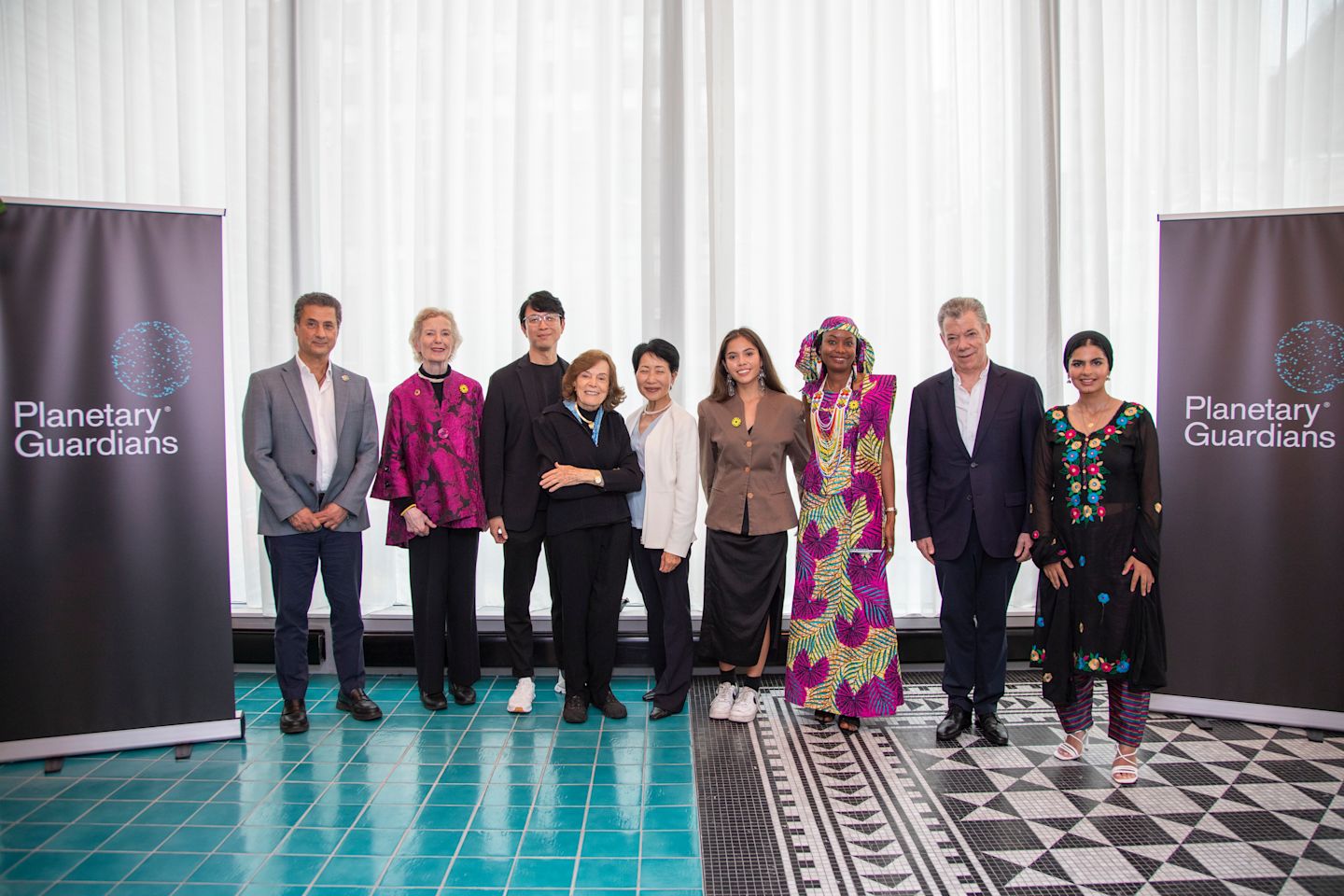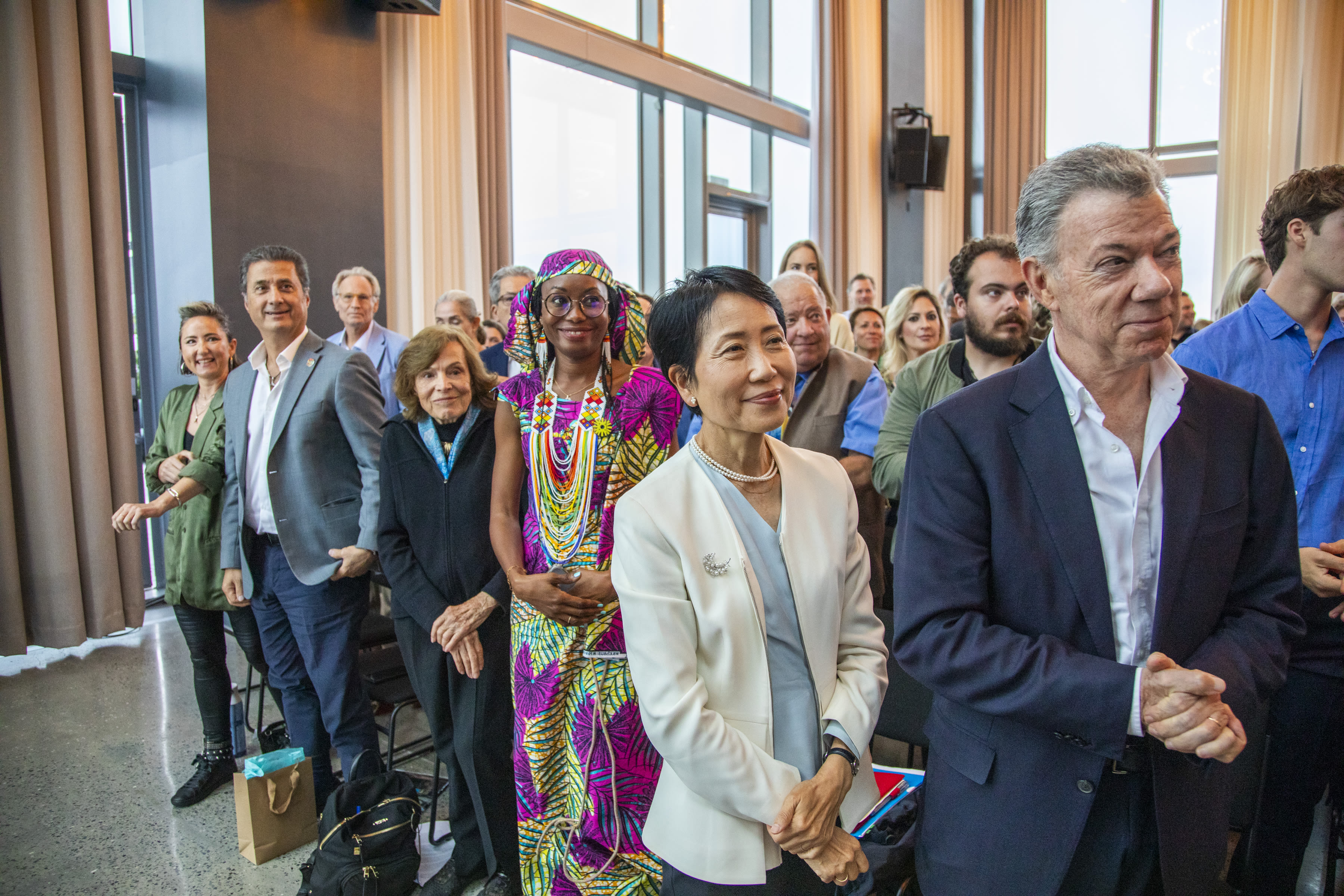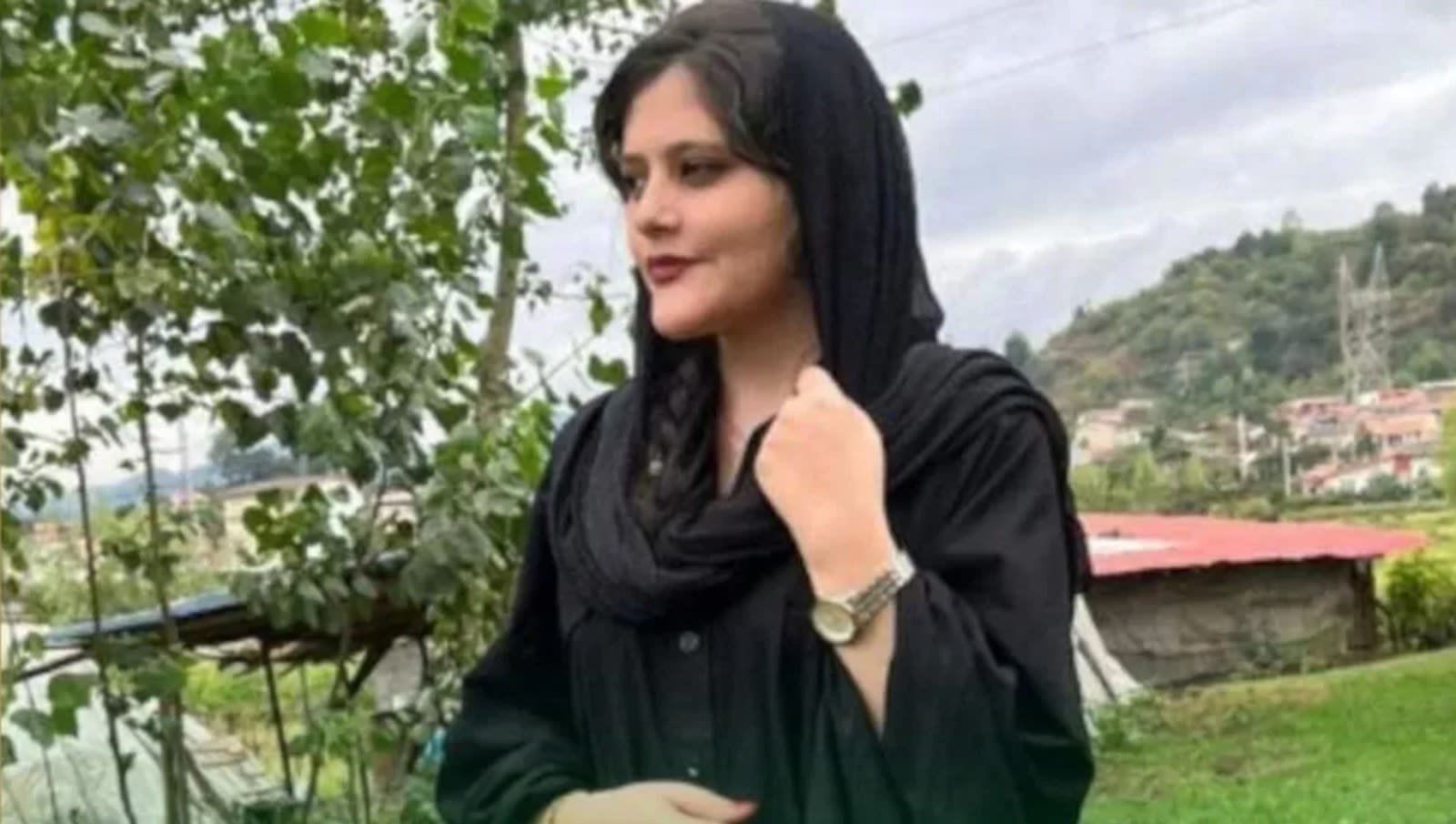How the Planetary Guardians Can Help Secure Earth’s Future
Catastrophic wildfires in Canada and Europe. Drought in East Africa. Extreme heat waves in the U.S. and the Mediterranean. Torrential rainfall and floods across Libya, Pakistan, India, China, and Italy. The headlines tell a grim story: our planet, the only home we have, is in bad shape. And we have no one to blame but ourselves.
Yes, greenhouse gas emissions play a huge part. Humanity is not on track to meet the goals of the 2015 Paris Climate Agreement. And the cost to future generations is rising with every passing day of inaction.
But runaway climate change is not our only problem. To better understand what we are really facing, think of earth, as others like Buckminster Fuller and Adlai Stevenson have done before, as a cosmic vessel journeying through space, equipped with a number of life-support systems that keep its passengers alive. What if we keep pushing all of these systems too far? Enter the concept of “planetary boundaries.”
First developed in 2009 by a global team of 28 of the world’s leading scientists led by Professor Johan Rockström of the Stockholm Resilience Centre, the planetary boundaries framework identifies nine critical systems needed to regulate the health of the entire planet. From climate change to freshwater use, biodiversity loss to chemical pollution and the release of novel entities, these boundaries define what Rockström calls the “safe operating space” for humanity. Veer too far beyond these limits and you risk causing irreversible damage to the very ecosystems that sustain life.
This really isn’t abstract alarmism. We’re not merely approaching these thresholds; in six out of nine boundaries, we’ve already pushed right past them. This year alone we’ve seen the hottest month on record since 1880. Wildlife species populations have declined by an average 69% over the past 50 years. Habitat loss is driving declines in pollinators, affecting global food crops. And the proliferation of microplastics in oceans and their ingestion by marine life has reached worrying levels.
To make things worse, the interconnected nature of the planetary boundaries means that deterioration in one can destabilize others, setting off a chain reaction of environmental degradation and further detrimental impacts on communities, often hitting hardest the ones who have not caused the problem.
Despite this unsettling state of affairs, there is hope. The genius of the planetary boundaries concept lies in its ability to sound the alarm, offering a roadmap to stay within our planet’s limits. For earth’s ship to sail smoothly, understanding and safeguarding these boundaries will be key.
As part of that effort, Virgin Unite has been working with several partners to launch a new initiative called “planetary guardians.” Collaborating with Johan and the scientists who developed the planetary boundaries, this independent collective of leaders will embark on a mission to elevate the science, including calling for increased investment in science, and to make the boundaries an essential measurement framework to inform collective global action.
The Guardians will call on the U.N. Security Council, the G7 and G20, multilaterals, and governments to use the planetary boundaries framework as a measurement and risk framework for global coordination, including accountability to existing agreements such as the High Seas Treaty, the Paris Agreement, and the Global Biodiversity Agreement.
Partnering with platforms like the Bridgetown Initiative led by Prime Minster Mia Mottley of Barbados, the group also hopes to help reform the international financial architecture to take a planetary view, to consider science and the true value of nature, and to significantly increase funding for adaptation, mitigation, and development without increasing the debt burden on emerging economies.
To aid these calls, the planetary guardians will produce an annual health check on planetary boundaries, so we can all better understand how we are doing, what’s working, and what’s not. By providing a regular, comprehensive assessment of the state of earth’s systems, we can monitor changes, gauge risks, identify urgent actions, develop solutions, and assess our progress.
Starting as an independent group of fourteen, the guardians are a diverse collective, collaborating across generations, cultures, and sectors; including Former President Mary Robinson, Former President Juan Manuel Santos, Ayisha Siddiqa, Robert Redford, Sylvia Earle, Farwiza Farhan, and Jane Goodall, the guardians will seek to expand and grow, eventually hoping to inspire many more planetary guardians, united in their commitment to restoring a healthy partnership with the planet.
Can it be done? Of course, and we don’t have to look far to see how: in the 1980s and ’90s, the state of stratospheric ozone (one of the planetary boundaries) was of growing public concern. Our atmosphere’s ozone layer shields earth from much of the sun’s ultraviolet radiation, and a proliferation of ozone-depleting substances used in refrigeration and as propellants had created a rapidly growing ozone hole over Antarctica.
What happened next gives us a roadmap to reversing the damage being done to our planet. The Montreal Protocol—a triumph of collaboration between science, governments, multilaterals, and business—transformed entire industries, invested in science to track and understand the problem, and phased out 99% of ozone-depleting substances. Scientists now predict the ozone layer will largely be restored by 2060.
If there’s but one lesson to glean from the ozone example, it’s this: changing course isn’t a solo endeavor. It requires constant vigilance and radical collaboration. With the planetary guardians on their way to elevate the science, I remain hopeful that humanity will succeed. We owe it to our children and grandchildren.









